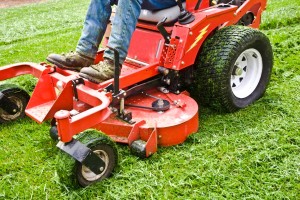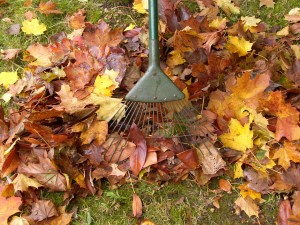 You are probably not thinking much about your lawn with winter fast approaching. However, autumn is the latest time you can perform lawn rejuvenation. With its considerably cooler temperatures and occasional rainfall, autumn is the perfect time to prepare your garden for spring.
You are probably not thinking much about your lawn with winter fast approaching. However, autumn is the latest time you can perform lawn rejuvenation. With its considerably cooler temperatures and occasional rainfall, autumn is the perfect time to prepare your garden for spring.
Although you might think your garden requires less care in fall since the grass grows slowly, just the opposite is actually true. In preparation for the usually dormant winter season, grass absorbs energy, moisture, and nutrients during autumn. By giving your lawn a little attention in the fall, you will most likely have a lush, healthy lawn come spring. Below are steps to ensure you properly rejuvenate your lawn this autumn.
Keep mowing
You should keep watering and mowing your lawn throughout autumn. However, dropping the blade to the lowest setting towards the end of the season for the year’s last two cuttings is important. By cutting low, you allow more sunlight to reach the crowns of your grass. However, you should not trim off more than a third of the grass blades at any given time.
Aerate the soil
Autumn is also an ideal time to aerate your lawn, which ensures oxygen, water, and fertilizers reach the roots of your grass easily. You can use a gas-powered, walk-behind aerator to quickly punch holes into the soil in your yard and extract plugs of dirt. You can hire the machine if you do not have one or engage the services of a landscaping contractor to aerate the soil in your yard.
 Rake the leaves
Rake the leaves
Removing fallen leaves from your yard as soon as possible is important, which means you should not wait until all the leaves fall from the trees before you start raking. If you wait, the fallen leaves will most likely become wet from morning dew and rain, sticking together to form an impenetrable mat that can suffocate the grass or breed fungal diseases if left unmoved. You can also use a lawnmower that features a collection bag or vacuum system. Regardless of method, ensuring you remove the fallen leaves before they turn into a soggy, suffocating mess is important.
Fertilize to ensure future growth
If you only fertilize your lawn once every year, it is best to do it in autumn since although the rhizomes and roots of grass continue to grow at a rapid pace, grass blades grow at a much slower rate as the weather turns cool. Applying fertilizer in autumn ensures the availability of essential nutrients, which allows the grass to grow deep roots now while preserving nutrients for a healthy start come spring. It is best to wait until mid-to-late autumn to apply a dry lawn fertilizer, being careful not to miss any area. Although using a walk-behind drop spreader takes a little more time, particularly on hilly yards, it is the best way of applying an even and consistent layer of fertilizer.
Fill in any bald spots
Autumn is also the best time to fix any bare or bald spots. Using an all-in-one lawn repair mixture is arguably the quickest and easiest way to fill in bare spots. This ready-to-use mixture contains organic mulch, grass seed, and a special quick-starter lawn fertilizer. Using a garden rake, scratch the soil at the bald spot loose and then spread a thick layer of lawn repair mixture over the area. Thoroughly water the area after you lightly compact the mixture. Keep watering the area every day for two weeks.
Weed control
Autumn is also the perfect time to fight back any weed that might have taken over your lawn. Like most plants, weeds enter the energy-absorbing mode in the fall, and they take in everything they come across, including weed killers. Applying herbicides in autumn ensures weeds do not return come spring.
